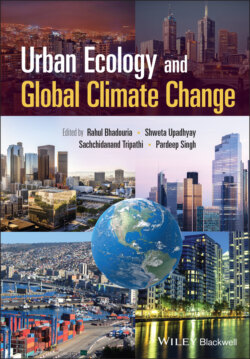Читать книгу Urban Ecology and Global Climate Change - Группа авторов - Страница 29
1.5.3 Green Infrastructure
ОглавлениеGreen infrastructure is a strategic approach of landscape and environmental planning based on the principles of landscape and urban ecology (Niemelä 2014; Ramyar and Zarghami 2017). It represents the interconnected network of ecosystem structures such as green spaces (parks and gardens) and water bodies which are designed and managed for delivering numerous ecosystem services (European Commission 2013; Niemelä 2014; Green et al. 2016). These infrastructures are the critical components of the urban areas and provide several benefits to the humans in terms of ecological, environmental, and social challenges (Tzoulas and Greening 2011; Keniger et al. 2013; Ramyar and Zarghami 2017). Moreover, the concept of green infrastructure provides a common platform for scientists and researchers from ecology, social science, engineering, and landscape planners to interact and develop management systems for tackling different environmental issues (Pauleit et al. 2011). Green infrastructures can help in alleviating the impacts of UHI effect; however, UHI effect alternatively impacts the vegetation phenology, therefore, the role of these infrastructures in reducing UHI effect needs further research (Niemelä 2014; Dallimer et al. 2016). Therefore, increasing interests have been reported in investment in green infrastructure development and urban ecosystem regeneration in the recent years (Green et al. 2016). By having multiple benefits, green infrastructures are considered to play a major role in climate change adaptation (Ramyar and Zarghami 2017). Detailed viewpoint on different types of green infrastructures and their role in combating climate change has been given in the following sub‐sections.
